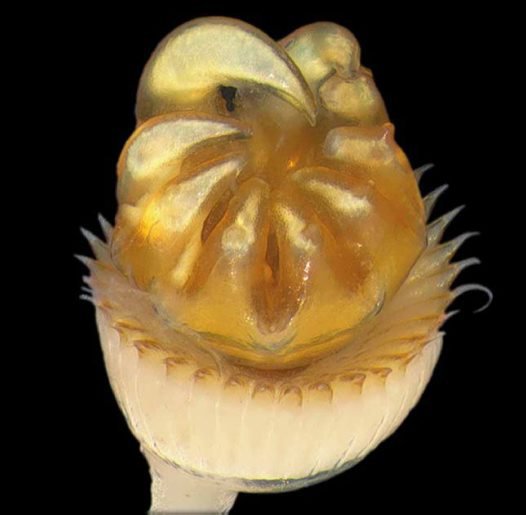And a worm award goes to… an AMRI student!
AMRIs Yanan Sun wins the Best Student Poster Award for her presentation on invasive calcareous tubeworms.
Yanan Sun is currently completing her PhD project at Macquarie University, but spends most of the time at the Australian Museum Research Institute studying marine calcareous tubeworms of the family Serpulidae, supervised by Pat Hutchings and myself. The animals in question are very unusual worms that build external structures (shells or tubes) of calcium carbonate, something that is typical of molluscs and crustaceans. Yanan’s research focuses on the Hydroides, the largest (almost 100 species) and the most economically important genus of calcareous tubeworms, known for its notorious fouling and invasive members. The project aims to help distinguish native species from potentially harmful exotics, having important implications both environmentally and economically.

© Australian Museum
Last year Yanan published a large illustrated monograph that revises all Hydroides species found in Australia. One of the new species in the monograph was named Hydroides amri, honouring Australian Museum Research Institute and its research focus on the understanding of pest species.

© Australian Museum
Invasive species typically have very wide geographic distributions, but an important question in invasion ecology is whether such wide distributions are indeed a result of 1) human-mediated translocations, or 2) a number of previously unrecognised, so called cryptic being involved. Yanan addressed this question by looking at DNA sequences of a well-known invasive Hydroides dianthus, a species originating from the east coast of the USA and reported from numerous localities around the world.

© Australian Museum
The results of the study were presented as an award-winning poster entitled “A global invader or a complex of regionally distributed species? Clarifying the status of an invasive calcareous tubeworm Hydroides dianthus (Verrill, 1873) using barcoding” at the 9th International Conference on Marine Bioinvasions held in Sydney in late January 2016.
The answer was not that simple, as Hydroides dianthus turned out to be a complex of two cryptic species, both having very high invasive potential and active in extending its range of distribution. These findings are important for Australian industries such as shipping and aquaculture, where knowledge about the invasion biology of alien fouling species such as Hydroides dianthus will help to detect the early potential arrival of the species and mitigate the economic impact that may come with them. Currently, we are working on writing up these results as a manuscript that will be shortly submitted to the journal Biological Invasions. Well done, Yanan!
Dr Elena Kupriyanova
Senior Research Scientist, AMRI
More information:
- Sun, Y., Wong, E., Keppel, E., Williamson, J., Kupriyanova E. K. A global invader or a complex of regionally distributed species? Clarifying the status of an invasive calcareous tubeworm Hydroides dianthus (Verrill, 1873) using barcoding. Poster submission for the 9th Annual Conference on Marine Bioinvasions, Sydney 2016.

